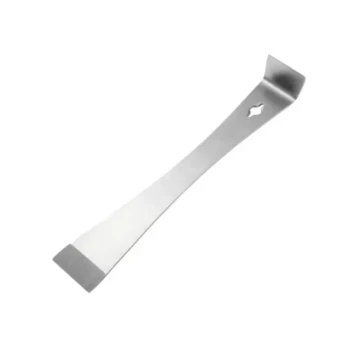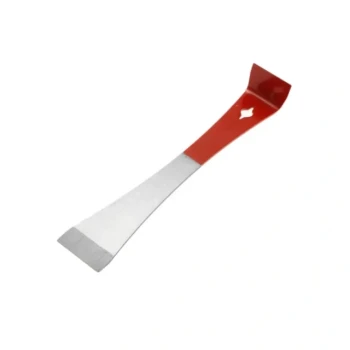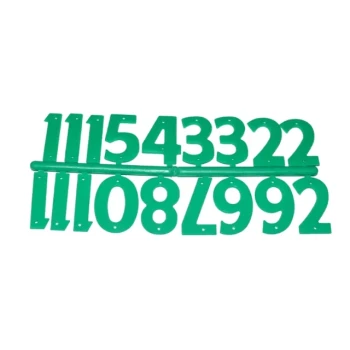To begin beekeeping, you need three categories of equipment: a home for the bees (the hive), protective gear for yourself, and basic tools to manage the colony. The hive itself consists of several components including a bottom board, hive bodies with frames, and covers, while your essential tools are a hive tool and a smoker.
The equipment list can seem long, but it boils down to understanding the function of three core systems: the hive that houses the bees, the protective gear that keeps you safe, and the tools that allow you to interact with the colony calmly and effectively.

The Core Components of a Beehive
A modern beehive is a modular system designed for the bees' health and the beekeeper's ease of access. Each component serves a distinct purpose.
Hive Body and Frames
The hive body, or brood box, is the main living area for the colony. This is where the queen lays her eggs and the colony raises its young.
Inside the hive body hang frames, which hold sheets of foundation. Foundation is a wax or plastic sheet that gives bees a guide to build straight, manageable honeycomb.
Honey Supers
Honey supers are smaller boxes placed on top of the main hive body. These are designated for the bees to store surplus honey that you will eventually harvest.
Queen Excluder
A queen excluder is a screened grid placed between the main hive body and the honey supers. The openings are large enough for worker bees to pass through but too small for the larger queen, ensuring she only lays eggs in the brood box below.
Covers and Bottom Board
The hive is capped with an inner cover for ventilation and an outer cover to protect it from the elements.
The entire structure sits on a bottom board, which serves as the floor and entrance for the bees.
Essential Tools for Hive Management
Beyond the hive itself, you need a few key tools to perform inspections and manage the colony.
The Hive Tool
A hive tool is a small, specialized crowbar. It's the single most critical tool for prying apart hive boxes and frames, which the bees seal together with a sticky resin called propolis.
The Smoker
A smoker is a metal can with a bellow that you use to puff cool, white smoke on the bees. The smoke masks the bees' alarm pheromones, which helps keep them calm during hive inspections.
The Bee Brush
A bee brush has very soft bristles and is used to gently move bees off a frame. This is useful when you need a clear view or are preparing to harvest honey.
Feeders
Feeders are containers used to provide sugar syrup to a new or struggling colony. This supplemental feeding helps them build up strength when natural nectar sources are scarce.
Your Personal Protective Equipment (PPE)
Proper protective gear is essential for your safety and confidence when working with bees.
Veil and Jacket
The most critical piece of PPE is a veil, which protects your face and neck from stings. Many beekeepers opt for a beekeeping jacket with a veil built into the hood.
A full beekeeping suit is often not necessary for beginners. A good jacket and veil combination, paired with durable jeans, is sufficient for many.
Gloves
Beekeeping gloves are typically made of leather or thick canvas and extend up your arm. They protect your hands and prevent bees from crawling up your sleeves.
Common Pitfalls to Avoid
Thinking ahead with your equipment is key to a smooth start.
Assemble and Paint Early
You should purchase and assemble your hive components well before your bees are scheduled to arrive. Most wooden hive parts require painting to protect them from the weather, and this takes time to cure.
Store Foundation Carefully
Do not install wax foundation sheets into the frames until you are ready to use them. Improper storage temperatures or handling can cause the wax to warp and stretch, making it difficult for the bees to use.
Making the Right Choice for Your Goals
Your initial equipment purchase depends on your budget and how comprehensive you want your starting setup to be.
- If your primary focus is starting with the absolute minimum: Secure a complete hive, a veil, gloves, a hive tool, and a smoker.
- If your primary focus is a comfortable and complete start: Purchase a beginner's kit that includes all the minimums plus a bee brush, a feeder, and a jacket with a built-in veil.
Ultimately, understanding the function of each piece of equipment empowers you to build the apiary that is right for you.
Summary Table:
| Category | Essential Equipment | Key Function |
|---|---|---|
| The Hive | Hive Body, Frames, Honey Supers, Covers, Bottom Board | Provides a safe, modular home for the colony. |
| Protective Gear | Veil, Jacket, Gloves | Protects the beekeeper from stings during inspections. |
| Core Tools | Hive Tool, Smoker | Essential for safely opening the hive and calming the bees. |
| Support Tools | Bee Brush, Feeder | Assists in hive management and colony support. |
Ready to equip your apiary with confidence?
As a trusted wholesale supplier for commercial apiaries and equipment distributors, HONESTBEE provides the durable, high-quality beekeeping supplies you need to build a thriving operation. From robust hive components to reliable protective gear, our products are designed for the demands of serious beekeeping.
Contact our team today to discuss your wholesale needs and discover how we can support your business's growth.
Visual Guide

Related Products
- Long Langstroth Style Horizontal Top Bar Hive for Wholesale
- Langstroth Bee Hives Bee Keeping Box for Beginners Beekeeping
- HONESTBEE Professional Multi-Functional Hive Tool with Ergonomic Wood Handle
- HONESTBEE Advanced Ergonomic Stainless Steel Hive Tool for Beekeeping
- HONESTBEE Professional Long Handled Hive Tool with Precision Cutting Blade
People Also Ask
- What are the benefits of the top bar hive? A Guide to Ergonomic, Natural Beekeeping
- What is a top bar bee hive? A Natural, Low-Stress Beekeeping Solution
- What are the advantages of a top bar hive? Simpler, Bee-Centric Beekeeping for All
- What are the box management requirements for a top bar hive vs. Langstroth? Choose Your Hive Strategy
- How does the design of a top bar hive benefit beekeepers? Ergonomic & Natural Beekeeping for Hobbyists



















